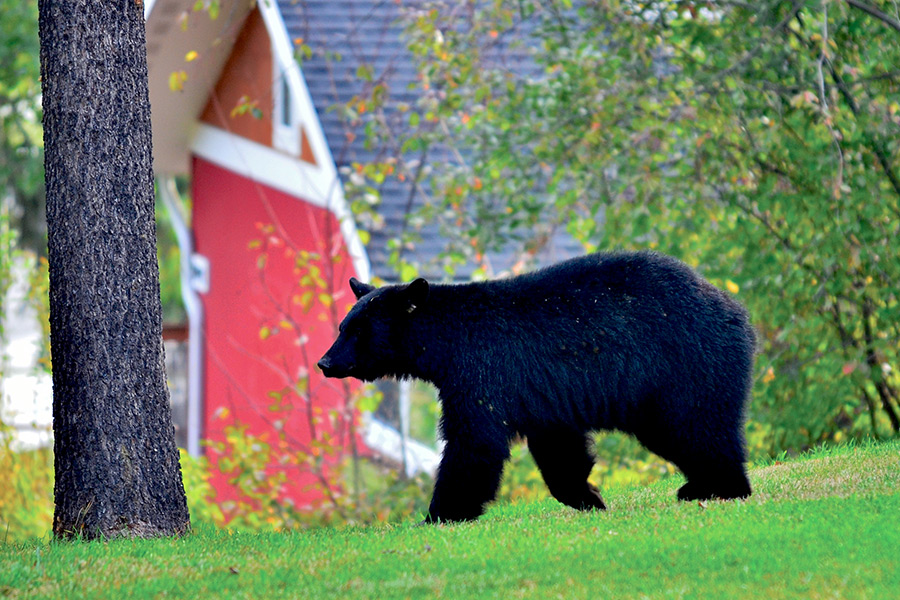With the arrival of spring, bears are emerging from their mountain dens and descending into the lower valleys in search of food.
Earlier this week, tribal biologists located a radio-collared female grizzly bear at the base of the Mission Mountains on the Flathead Reservation.
Stacy Courville, wildlife program bear biologist with the Confederated Salish and Kootenai Tribes, reminds the public that springtime is accompanied by an increase in bear activity. After stirring awake, bears begin seeking food sources, and they are often drawn to items such as garbage, pet food, bird feeders and chicken coops. Food-depleted bears can react aggressively if they’re surprised while feeding.
Residents are reminded to take steps to avoid conflicts by reducing attractants.
Wildlife managers recommend bear-resistant bins in communities and on ranches; electric fence systems to protect chicken coops, bee yards and sheep bedding grounds; and random redistribution of livestock carcasses each spring.
Domestic chickens have been a particularly serious problem the past few years, according to wildlife managers.
Since 2010, tribal biologists have captured 26 grizzly bears related to depredations on chickens or other small livestock. Thirteen of those bears were either euthanized or placed in zoos, according to CSKT.
Biologists determined that an effective electric fence would have prevented the bear conflict in all of the incidents, according to Courville.
There are over 1,000 grizzly bears in the Northern Continental Divide Ecosystem, an area encompassing the Flathead and Swan valleys. It’s the largest population of grizzlies in the lower 48 states.
Anyone recreating in bear country is also encouraged to take precaution. Courville highly recommends people carry bear spray in the outdoors. Bear spray should be readily accessible and the user should know how to use it, Courville said. The proper use of bear spray has proven to be the best and most effective method for fending off threatening and attacking bears and for preventing injury to the person and animal involved, Courville said.
One of the best ways to ensure safety is to travel in a group of three or more people and make noise. Recreationists should make loud noise especially when in dense brush or near running water where surprise encounters are likely to take place.
If a grizzly bear is observed on the reservation, report it to the Wildlife Management Program at 406-883-2888. Report bear conflicts or problems to Tribal Law & Order Dispatch at 406-675-4700. When calling regarding a bear, always tell Tribal Dispatch you are calling about a bear problem or conflict.
To report a bear incident outside the reservation, contact Montana Fish, Wildlife and Parks at 406-892-0802.
To receive information on securing bear attractants and preventing conflicts, call the Tribal Wildlife Management Program at (406) 883-2888.
Montana Fish, Wildlife and Parks’ Be Bear Aware website is an easy way for homeowners and landowners to assess what they need to do to prevent bear conflicts. Visit the site for tips and tools on obtaining and using bear spray, safe camping and hiking, access to bear resistant produce and a guide to the many food-related and other items that attract bears to a property.
